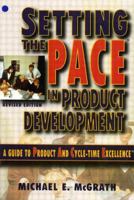Next Generation Product Development: How to Increase Productivity, Cut Costs, and Reduce Cycle Times
Select Format
Select Condition 
Book Overview
A Hands-on manager's guide to making the most of today's product development breakthroughs
A quarter century after MRP first transformed the global manufacturing arena, Next Generation Product Development stands poised to similarly impact new product development. This movement-defining book gives R&D professionals an in-depth explanation of the ways in which companies are able to achieve substantially higher levels of development productivity, while better aligning product development with strategy through new practices and systems.
Processes explored in Next Generation Product Development, and enabled by cutting-edge new-enterprise software, promise to explode the possibilities of what product development professionals can accomplish. This hands-on practitioner's guidebook will:
Establish a common set of frameworks and concepts Introduce new project portfolio and product strategy management practices Help R&D professionals increase productivity by 30 to 50 percent




























